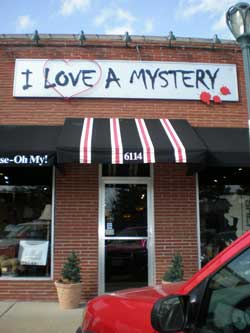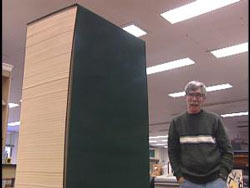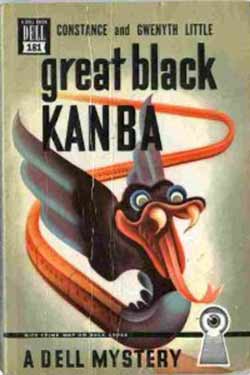
What this means for mystery fans is more used hardcover and paperback mysteries than you can shake a blunt object at. What it means for yours truly is a whole big heap of mystery paperbacks. Which is not to say that I would never read a mystery hardcover. I have and I am and I will again – when the situation demands it. Fortunately, my preference for classic or traditional or Golden Age mysteries or whatever you want to call them means I have a pretty good chance of scoring something worthwhile on the paperback shelves.
There’s something nifty-keen about a paperback book, but they are not created equal. Not to sound like the crotchety old fart who had to walk twelve miles to school every day in a blinding snowstorm (even in summer), but things aren’t what they used to be and that’s certainly the case with paperback books. I know my descendants might be saying the same thing fifty years from now, but hey, whatever.
My beef with the more recent crop of paperbacks and by “recent” I’d say from about 1980 onward, is that they just seem to lack personality. To be a little more specific, they simply reek of soulless newfangledness, with those overly slick, glossy covers that more often than not are saddled with bland, generic cover art. But that’s just my opinion. Your mileage may vary.
Then there’s the matter of size. Size does matter and it’s my carefully considered opinion that mystery novels nowadays are just too long. It’s partly an aesthetic issue though some have said that mysteries generally work better at a more modest length. I haven’t done any research into the matter but troll 
One benefit to all of this, at least when it comes time to go used book shopping, is that I’ve trained my lazy eye to ferret out the few old paperbacks that typically reside on shelves filled with zillions of more current books just by scanning for the slim volumes and blocking out the rest.
I’ve tried and tried but I can’t quite articulate what it is that makes old paperbacks so appealing. All I can come up with is to say that they’re all the things that new paperbacks aren’t and that’s not really a good answer. But if I 
Great Black Kanba is copyrighted 1944, though there’s no indication of when the paperback came out. It’s slightly smaller than a standard paperback and the cover proclaims that it’s “A Dell Mystery,” one that comes complete “with crime map on back cover.” Well, sign me up. To be perfectly nitpicky, it’s not so much a crime map, at least not in the strictest sense of the word, but rather just a map of Australia that shows the route of the train journeys that are integral to this book.
The inside front and back covers and flyleaves are a pleasing shade of blue and there’s some nice introductory matter, including a page devoted to “persons this mystery is about” and one that details “what this mystery is about.” As for the table of contents, well, it’s certainly not any old TOC but rather “A List of Exciting Chapters.” Add to all of this that patina of age that’s colored the pages ever so slightly and that unique old paperback aroma and it all adds up, like so many other old tomes, to a package of paperback magnificence worth seeking out.
Image via KWWL-Iowa
William I. Lengeman III is a freelance journalist with a fondness for gourmet tea and traditional mysteries. He writes about the former at Tea Guy Speaks and the latter at Traditional Mysteries.
